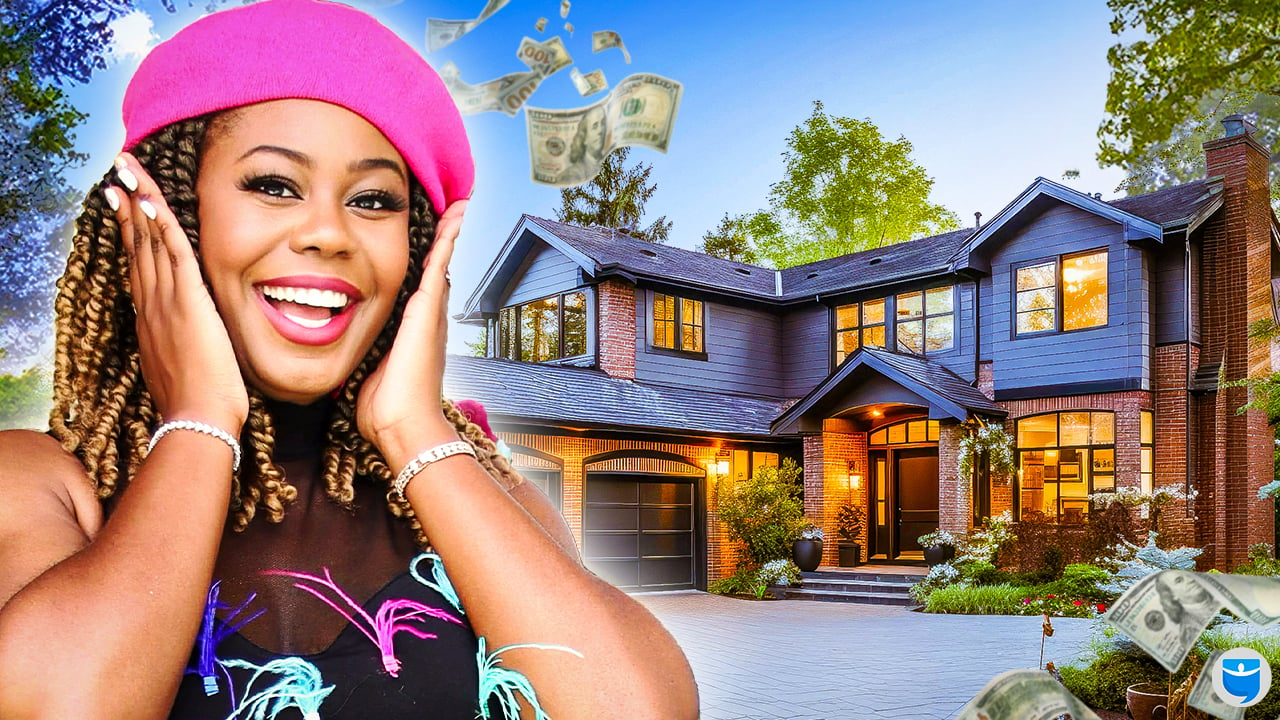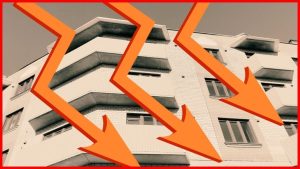
If you follow these Airbnb design tips, you could double your nightly rates almost instantly. Don’t believe us? Erica Dike, a short-term rental design expert, has done it before and is sharing her “designing for dollars” formula ANYONE can use to boost nightly rates, double revenue, or increase their bookings. Erica, like many of us, has seen the standard Airbnb designs. You know what we’re talking about—the sterile walls and lack of color, or the obscurely small dining room table for a cabin that’s supposed to sleep ten. Erica’s designs go far beyond what most guests expect, and that’s why she’s been so successful.
Erica gives us the three steps to her “designing for dollars” formula, plus seven tips that ANY Airbnb, medium-term, or long-term rental investor can use to attract their target guest/renter and start making more money than ever before. Plus, if you’re a host with a lackluster short-term rental and are looking for some quick design ideas to spruce up your space, Erica shows you step-by-step how to refresh your rental for MORE revenue!
No matter what space you’re in—vacation rentals, travel nurse housing, student rentals, or fix-and-flips—these design tips will blow your potential renters and buyers away, leaving you with more money than the house next door. Ready for Erica to “crack the code” on Airbnb design? Let’s get into it!
Dave:
Henry, you probably know that I’m no short term rental expert, but I, I dabble a little bit and in my dabbling I’ve found that furnishing a short term rental is the most confusing and perhaps frustrating part. Like you’re spending money, you’re making so many different decisions and you have no idea if any of it actually works.
Henry:
I have the exact same experience and it’s a little different for me ’cause I actually enjoy design. My wife would tell you that I should not enjoy design <laugh>, but I do enjoy design, but I also like saving money. But our guest today has actually cracked the code on how exactly to design your short-term rental space to really make you more money.
Dave:
And I think we can all agree that sounds pretty good. Welcome everyone to the BiggerPockets Real Estate podcast. I’m Dave Meyer. Joined today by Henry Washington
Henry:
And today we’re talking to Erica Dike, who uses a very strategic design and framework to help investors get their rentals as profitable as possible. Erica used to be a business analyst just like Dave and I and worked with NASA and now she uses that analytical approach to make very smart decisions about how to design short-term rentals.
Dave:
And today we get to learn from Erica’s amazing process and analytical brain as she shares the three biggest ways investors can make more money on their short-term rentals with something as relatively simple as design. So with that, let’s get to Erica. Erica, welcome to the show. We’re super excited to have you here.
Erica:
Thank you so much for having me.
Dave:
Yeah, this is gonna be great. I’d love to start hearing from you why you think it’s important for investors who work in the short term rental space to think strategically, specifically at the beginning of their investment when they’re designing their space.
Erica:
I, I like to put it this way. So short term rental is indeed, it is a form of real estate investing, but once you purchase the property, you’re now in hospitality. So that’s the vehicle where you’re going to make your investment. And so if you don’t really use that strategy when you’re designing, you’ve kind of just stopped planning your investment and now you’re hoping like, oh, I’m gonna just put this in here because this looks good and I’m gonna hope I get those numbers. So if you know, if you’re pulling out from your 401k or personal savings and this is a risk that you’re taking, you really wanna make sure you’re gonna hit those goals. And it starts by thinking about strategy from the beginning of your design all throughout to execution.
Henry:
That’s a really good point. I’m glad we have someone here who kind of specializes in this to, to talk about it from an investment standpoint because you’re right, people go and they make these investments in these large properties and they consider the down payment that they pay as part of their investment. They even consider the money, they pay for the furniture as part of their investment, but they don’t think about the specifics of what that goes into that and what that budget should be spent on and how they can get a return on that portion, the investment. I’ve never heard someone talk about the investment in the experience as part of your investment. So I think that’s super cool.
Erica:
So with a design strategy, it also really simplifies that process of making design decisions. A lot of times, you know, investors, they’re not designers, they just got a property but they need to design it and sometimes they don’t have the funds to work with a designer. So if you use a strategy it makes making those decisions a lot easier. Instead of looking at, oh this is so many different sofas, which one should I get? Now you have your strategy, like I’m trying to target a specific market so I need to get this specific sofa. It just kind of makes your options smaller and fewer and it just speeds up the process when you know what you’re doing,
Dave:
That is the most exciting thing you could have possibly said. ’cause nothing intimidates me more than design decisions. Like I’ve walked into furniture stores and just like turned around because I get so overwhelmed I have no idea what to do and what to choose. So I’m excited to dig into how you can create this framework to make these decisions easier. And I understand from your background, Erica, that you go about this in a rather analytical way. And I know Henry and I were both very excited to read your background ’cause Henry was a business analyst, I was a business analyst, you were a business analyst. So we all share a common career trajectory. How do you apply those analytical skills to your current role?
Erica:
It’s pretty simple. Let’s put the design part aside and we’re looking at several factors. So in business analysis you have different elements that you’re working with. So like the feasibility based on the cost, the time that you have, uh, the size of your property, how many guests you really must fit into this property to make, you know, your proforma numbers, you have all those pieces. So if you use those to design your space, so like if I’m picking a sofa, does this sofa at this rate, is it going to make me back a lot of money or is this just something I’m splurging on that’s not gonna have a return? Just breaking down the process that way. The same way you would in business analysts, you have these features and you have to make sure you meet this project to completion by hitting all these milestones, doing it that same way will make designing a lot less stressful than trying to be a designer.
Henry:
So if I hear you correctly, it sounds like you actually take the metrics of the property, meaning how many people is it supposed to sleep, right? And, and you look at those factors when selecting the types of design. So you’re not blowing the entire budget on a super awesome couch that only sits two people in my property that has, you know, uh, sleeps 10.
Erica:
Yes, exactly. Um, so I, I like to call this my designing for dollars formula. So pretty much you’re going to focus on three things. Your target market offering your target market value and providing a unique experience for your target market. So those three parts you need to keep in mind when you are designing your property. So the first thing you wanna think about is who am I trying to attract to my property?
Dave:
Alright, let, let’s dig into that Erica, because I think this is something a lot of investors myths, both, uh, short-term rental investors and long-term rental. I is like really thinking about where the demand is gonna come from and who you’re trying to attract here. And so it seems like quantity of guests is obviously one thing, so you wanna make sure, you know, it’s eight, you know, eight versus 12. But what are some other things that investors should be thinking about when sort of developing this target persona in their mind? The
Erica:
Main thing I want them to consider is balancing your budget. So if you have an investment range of let’s say 20,000 and you, you wanna get this mansion of a property ’cause oh it’s gonna sleep 20 people, your budget is not going to be able to furnish that, um, property in a way that you can attract that target market because now you have that number of rooms but you’re not offering the value that that target market wants. You don’t have comfortable sleeping because you were trying to stretch that budget. Um, and it just kind of makes your investment not worthwhile. So kind of getting an expert opinion on if with this amount can I truly, truly furnish this property to accommodate this number of people, that’s gonna really help you make the first level of a good investment because yes, you can get things on Facebook marketplace to squeeze into your budget, but is it offering, like can we mention functionality to that target market or will they be like, well this person spent more and I’d rather stay here. That’s where that value comes in. So just really knowing what is possible, not just what’s in your mind, but what’s possible in reality before you set out to design and start purchasing things is going to be really key to making the most out of your investment.
Dave:
We do have to take a quick break, but stick around. We have more with Erica and designing for dollars after this.
Henry:
Welcome back to the BiggerPockets podcast. We’re here with Erica Dike.
Dave:
So just to make sure I’m hearing you right, you like, if you were saying like I may in theory want to attract high-end business people to my, uh, short-term rental in New York. I’m just making this up, but like I don’t have enough money to create a great work from home space or I don’t have enough money to get those high-end finishes. Maybe you have to sort of like rethink the type of person you’re going to attract based on what you can afford is sort of how you can stand out.
Erica:
Yes, exactly. So that brings us to the second point in the designing for a dollars formula after target market is that value. So in order for you to get your target market to come to like, oh, I want to, you know, rent out my your property or book your property per night, I need to see the value that’s there for me. And it’s not really like the cost of your furniture, but it’s the value of the, the experience you’re gonna have there, the amenities that you offer there. Um, a good example is I designed a property, um, it was a duplex property with two bedrooms, a living room, dining room, kitchen, bottom floor. It was really nothing honestly, but it was very close to downtown Houston. So it had a lot of attractions and I knew that the target market for that property would be groups who are coming to either celebrate a birthday, celebrate Bachelorette, like, or Sightsee, do something fun, they’re there for fun.
Um, in order to create that value that was going to attract them, what I did was design the dining room into a game room, um, of sorts slash bar. So there was a bar set up with glasses, um, different size glasses so they can either make a cocktail or take shots or drink beer, just different novelty glasses, a sign that said bar board games a table. Instead of just using that as a dining table, I added value to the property by making it a game room. And what that did was attract different types of guests or different types of renters that are seeking that experience and they’re willing to pay premium for it because the value of the experience is worth more than the cost per night or cost per month. Yeah,
Dave:
I I I think that that I I love that because I have, I don’t know if you guys, Henry if you’ve seen this, but like sometimes you go into these short-term rentals and it just doesn’t feel like it was meant for why you’re there. Like no one wants to go to like a super serious beach house Yeah. <laugh>, you know, or to like, you know, like a funky business hotel, you know, like it has to match it. Um, and I’m wondering, Erica, like you said, I knew that in this market people were gonna come and in big groups, like was that just intuition or is there something else that people can look at to try and figure that out? I
Erica:
Always like to say if you can’t plan a trip or plan a vacation, you can’t really host in a short-term rental. I
Dave:
Like
Erica:
That. And if you can’t design like a home, your home so that your people don’t ever wanna leave, you probably can’t design a home for someone to rent for a year or two years or three years. And that’s okay because there are people that know how to do these things, but that’s important to know. So when you are taking that risk, you shouldn’t, you should know, like if I can’t plan something super fun for them, I know who’s coming, I know why they’re coming, then I’m gonna have a difficult time designing the property. ’cause hospitality is about knowing people, knowing why they, why they what they want, what they value, what they appreciate, and that’s just going to attract them on autopilot. ’cause when they are looking, they’re not looking at, oh this is nice, this is nice. ’cause they don’t get to live there.
They don’t get to take those designs. If you stage the property, they don’t get to take that with them, but they can see the experience. Like with long-term, they can see, oh I can imagine, um, having Memorial Day barbecue here with short-term rental. They can see those first five pictures and say, oh, this is where we’re gonna sleep. This is the kitchen’s fully stocked the pool table. I can see us laughing around there, uh, the pool with all the seating, the lounge seating, I can see us having fun there. That’s what people are looking for. So again, it brings you back to the strategy. If you don’t keep that in mind when you’re designing at the end when you’re super tired and like, oh, I’ve done everything I can blood, sweat and tears, you’re gonna feel kind of away too towards your guests because they’re not appreciating what you thought was their best <laugh>. You know, like you didn’t think about the person you were buying a gift for. So you really had to know the people to get them to come.
Henry:
Yeah, I think first of all, you’re absolutely right and I think a lot of people got into this short-term rental space back when, you know, everybody was booking everything and now that’s not the case, right? Like there’s much more competition, which means you have to pay so much more attention to the who your target audience is and what you offer them, uh, specifically around what you anticipate their use for the property will be. Are there any tools or research that, um, that you do that maybe somebody else could use to try to help maybe learn some of these things about who might be coming to stay there and what they might want to experience in a particular property?
Erica:
Yeah, for sure. Um, an easy way is just to get started is if you are listing a short-term rental, just go on the platforms you plan to list on and look at properties nearby you and read the reviews. What are guests saying they appreciate about the space, why they came and you know, what they would love to see more, just getting a feel of who’s already coming into the area. Now if you want to, you know, attract your own set of people that don’t normally come on their own, then you would need to do more research into that. But just getting, just picking one person, maybe do five reviews and get an average of why they came and create your avatar and use that to build the unique experiences for that specific person. That’s a great idea. So, um, for unique experiences, I do have like this acronym that I put together that I subconsciously do now after doing it for so long.
But for someone that’s getting started, you wanna think of profile, so P-R-O-F-I-L-E and that’s gonna help you build that unique experience. So for the p you wanna think of personal touches. What is something that if they stepped into the property or they in the pictures, they would feel like, oh my goodness, like this is just for me. It could be a basket that your cleaners leave out or, um, an easy, super easy way I love to do, include some type of whiteboard or chalkboard and have your cleaner just put hi in their first name. So when they walk into the space, it’s like, oh, you know, this, this space is specifically for me that’s going to make them not really wanna think about negative things and be super picky because they already feel thought of. So if they do see like, oh, they didn’t fold this towel or something, they’re like, well, it may have been an oversight because you know, they really cared about me coming. So you wanna think of p personal touches?
Henry:
I’m gonna jump in real quick here before you move on to the next one. For y’all who are listening, you just got your money’s worth in that, that one tip right there. That’s a great tip. And that’s something that anyone can do because human nature is a big deal. And so what you’re talking about is like getting human nature on your side from the second they walk in the door. And when you do that, they exactly will, they will, they already feel like you’re a friend and so they don’t wanna make their friend mad, so even if something doesn’t go right, they’re like, ah, but she, you know, e Erica had my back ’cause you know, my name was on the whiteboard when I came in. So that fantastic tip. Okay, go ahead. I’m taking notes, but just, you know,
Dave:
Erica, I also wanted to compliment you because I, I don’t know if you listen to this show, but like on every reality show there’s like the tough judge and like every once in a while they crack and like you could tell they really like something, that’s when Henry takes out his pencil and starts writing something down and you got him to take out his pencil <laugh>. So that is a very, that bodes well and we’re only on p right now <laugh>, so we have a lot more to go. All right, so let’s hear what R is.
Erica:
So R is super, super easy routine. So think about your avatar. What do they do in their daily routine at home that they would love to see in your property? Everyone can do this one. Air fryers. Someone who uses an air fryer every single day, especially a mom who cooks for her family. And the air fryer makes it quicker when they are booking a stay and they see an air fryer in the kitchen that’s gonna, that small thing is such a huge deal to her. So even if it’s $150 more a night, she’s gonna think about, well, I can cook conveniently at home, as opposed to having to take the kids out because this kitchen is not fully stocked. You know, thinking about their everyday routine and just incorporating that into the design of your property is another great way to offer a unique experience that will attract that ideal guest.
Henry:
We’ve gone through several pro tips from Erica about short-term rentals, but when we come back, there’s even more of that came from, so stick around.
Dave:
Welcome back to the show. Let’s get back into it. All right, so we have personal touches, routine, what’s OO
Erica:
Stands for offers. So you wanna offer amenities that guests won’t find anywhere else. So really dig deep or look at the architecture of your property. Another example, I just did a refresh for a property in the Smoky Mountains and the deck areas has a great view, but there was no seeding at all. So although you can sell with the view and your titles and your pictures, when guests come there, they just have to stand on a deck, look at it, take a picture on their phone, like, oh this is cool, and they go inside. But now we are creating a unique experience and offering something at this property by having outdoor seating on that deck. So instead of just having a view, you’re creating or offering an amenity where you can come and experience this view in real time. Like you can sit down and literally look at this view, enjoy the view. So that’s another way to offer a unique amenity while looking at the architecture, the structure of your property and going along with those unique quirks.
Dave:
I’m just, let’s just keep rolling. Erica, this is great <laugh>, you’re making our job way too easy right now. We don’t even have to ask you questions.
Erica:
<laugh>. Okay. Um, f is for fear of missing out. So what is something your ideal guest will be afraid to, not afraid to miss out, but like I really want to experience that. Um, think about this is one that most people do already. If you want to attract bachelorette parties, create a stunning, um, bachelorette party background that people are like, I would really wanna book that property ’cause I really wanna take a picture in front of that, um, wall. Um, another thing, maybe you have a lakefront and you have tons of space in front. You can install several hammocks or canopies out there so people are like, wow, I really want to be able to sit and swing by the lake. That’s not something I can get at home. Or even at this other property that’s closer to the school, but no lakefront views, you know, just creating that, knowing what your ideal guest would really, really want is key to creating that fear of missing out in your design.
Henry:
I think this is such a great point about fomo and here’s how I know it’s such a great point. We have a co-host on this show, Rob Abasolo, who has a short-term rental. And in his short-term rental, he created a room that where bachelorette parties can all get ready together. So it’s a bunch of seats in front of a bunch of mirrors and it’s just supposed to create this experience where they can all get ready together. And I’m not a bachelorette and I don’t want to have a go party. I don’t want to go have a party where I can get ready with a bunch of my friends, but I have not stopped thinking about how cool must that be for the people who want that experience. And so like if my wife were to ever go there, I’m like, go stay at Rob’s place, right? Like, it, it creates so much FOMO that I’m like, I feel like I’m missing out. So this is a hu again, getting that human nature on your side. It’s so smart.
Dave:
All right, so, so far we have personal touches, routines, we have offers then fear so far in the profile acronym, what is i i
Erica:
Is include everyone. So when you’re designing your property, always think about your max guest count. Never say, oh, this house sleeps 10 and your dining table only sits six because what about the other four people? You know, you told me to come to this property that you were gonna sleep all of us, but I can’t even eat breakfast or dinner with everyone else. Like why? So thinking about everyone is going to create a unique experience at a group will be looking, I’m like, oh, let’s book there because we can hire a private chef and have our brunch in the house instead of going to the restaurant. So the cost of going to the restaurant that I’ve saved, I’m willing to spend on this property. And you offered value within that unique experience. So just thinking about everyone in all design decisions is another way to sell and create unique experiences for your ideal guests.
Dave:
I love that one so much. It’s probably my number one pet peeve at a as a Airbnb is when you go with a group and it’s like, yes, we technically sleep 12, but only four of you can have fun at a time so the rest of the eight of you can watch while we’re the rest of us are having fun. I think it’s so important, like you said, that that’s just makes that cohesive experience.
Erica:
Okay, infra l uh, landmarks. I know a lot of people are near landmarks and they ride the coattail of landmarks like five minutes from the Grand Canyon, that’s great, but there’s all other, there’s a lot of other properties that are five minutes from the Grand Canyon. So creating a unique experience while tying in that landmark is going to really sell not only the experience but the value in your property. And what I mean by that is, let’s say you want to increase your nightly rate and you wanna create a unique experience that includes that landmark. You could say, uh, that you offer one free chauffeur ride to the Grand Canyon, maybe even include a photographer in that. But when you tie your property into that landmark, you’re able to sell more and create a unique experience that they wouldn’t find anywhere else. And it also elevates their experience of that landmark.
So, um, another way to look at this, maybe you are near a body of water where people kayak. You could offer kayaks in within your property, maybe create this cool accent wall in your game area with the kayaks that they can take pictures of, but it also serves as storage for the kayaks so they can snap a picture in front of it, say about to go kayaking with the, whatever the, the cabin or mountain home is. Post it on their social media for free marketing and then they get the tube with the kayaks and the tubes and it was free, but it sold the experience by attaching your property to the landmark and creating that unique experience.
Henry:
This is amazing. This is exactly what people need to hear. I it’s just ringing so many bells right now ’cause I know there’s a short term rental in my area. And part of what they offer is they went and bought a golf cart and they will give their guests, uh, golf cart tours of the downtown area, you know, for an extra fee. And I’m like, this is, that’s, that’s l that’s what l is. Nailed it. That’s
Dave:
Awesome.
Erica:
And so the last one is educate. Um, it’s kind of optional, but I think it’s really important in getting raving reviews from your guests and that’s creating guidebooks of places that are super great in your area. Because of course we assume that when people visit somewhere, they already know where they’re going to eat or you know, they know all those things, but not really. Some people just get here and then they figure out where they’re eating or where you know they’re gonna spend time. But when you put educate them on the best options of everything, it creates a better experience for them. So take a business traveler for example, their main thing is I need to be close to the convention center. They really aren’t thinking about where they’re going to eat later, what they’re going to eat. They’re just trying to go to the convention. But when you educate them on, you know, here’s a great steak place to go. When they come back from that long convention, they go to that recommended steak place, it makes their night and in their review they say, oh, I love this property. The bed was so comfortable close to the convention center and I had the best stake. You should definitely stay here, blah, blah, blah, blah, blah. That type of review is what sells your property and your property alone because it offered a unique experience. I
Dave:
I love this framework, Erica. I thank you for sharing it with us and I hope that everyone listening to this, whether you have a short-term rental or considering it, are gonna be thinking about each and every one of these seven steps. I know Henry, he’s holding up a piece of paper right now, he’s clearly written this down, is gonna be taking this very seriously. Erica, I wanna talk about sort of the so what here, ’cause you’ve done a great job explaining to us what people should be thinking about. But let’s get back to sort of the investment side of this and how do these tips that you’re recommending here translate into actual revenue potential for investors?
Erica:
This always brings back the biggest question of design profitability, where to save and where to splurge. When you are designing your property, it all boils down again to the designing for dollars formula. So if you want to splurge on a pool table, for example, think about your target market quickly. Are they groups and families? Why are they coming? Will they appreciate, will they value a pool table? And if the answer is yes, you are like, okay, I may buy it, will this pool table create a unique experience in this property? Maybe you’re making the best use of a spare room that you have in the property or a spare area. So now instead of just this random room, you’re gonna throw a desk in, you decide to put a pool table and make this room a game room knowing who you’re trying to attract and what they value is gonna let you know.
If you splurge on these items, you’re going to get not only your return on investment, but you’re just gonna keep getting more and more of that because you’ve designed for people who are going to value this, people who are going to pay for it. Um, not going with trends and thinking like, yeah, this is a nice grass, uh, boxwood wall, but if I’m trying to attract travel nurses, they don’t care about a boxwood wall. So there’s no point in splurging on several panels to create this wall with a neon sign because they don’t value that. But could you splurge on a massage chair? Yes. Because they value that a lot. So it, it just goes down to those three points. Who am I trying to attract? Who’s my target market? What are they going to value and what unique experience am I creating for them by purchasing this amount? And it just, it’s, it always works because you’re working with data, you know, you’re not using your personal personal preferences like, oh, I love modern farmhouse. You’re thinking about the people you are trying to attract and you’re designing to attract them.
Henry:
I think it’s phenomenal. But a Dave and I like it because it’s based on data, right? So you’re essentially taking the data for who you know should or want or might want to be in that property and you make decisions based on that information. That is how both of us made a living for a long time. We probably are going to have, or we probably have a lot of people listening to the show who may not be in the short-term rental space, but they are in the long-term rental space or maybe the house flipping space. How can investors who maybe aren’t doing short-term rentals, uh, apply some of these, uh, tips and tricks and tactics to their particular niche?
Erica:
You can honestly use the same three. So think about who’s coming to that neighborhood. So let’s say you’re somewhere that is close by a university. I know here in Houston, uh, there’s, there’s an area by University of Houston and they just recently built a medical school there too. So the target market for that area has now changed. So if you were to invest in that area, you need to think about who would be coming to live in that area. What are they, are they professors? Are they doctors? Are they visitors? Are they interns? Who the size of your property, is it a duplex where you want to rent out single rooms to people who are coming to speak at the, um, at nearby facilities? Or are you hosting people who are doing their residency? And if you are, what would they need? Do they need space to eat?
If you don’t have space in that property, then you probably wanna not use them as a ideal renter. Um, just thinking about who is coming to that area and what they would like to see is the same, it’s the same format. I know it sounds so like duh, but it’s, it really is that e that simple. Like who are you trying to attract? Don’t do super cold gr gray walls. If you need people that are seeking comfort, just knowing who you want to come to the property and what they would like their space to feel like is really going to make renting easy because people will be dying to, you know, rent your space. Like, oh have, have they rented this already? This is perfect for what I’m looking for and it will be because you’re attracting different people, but they’re all coming for the same experience, the same reason.
Dave:
It, that just goes back to something we talk about quite a lot on this show is that whether, you know, we call this investing but it’s entrepreneurship and you are a business owner and your tenants or your guests are your client and you just need to be thinking about what your client wants. That’s how you generate demand, that’s how you get repeat customers. That’s how you get the best dollar for whatever it is that you’re selling. Uh, so absolutely love that framework and how you’re thinking about it. Erica, before we get outta here, I wonder if you have the data on this, but can you tell us what the average daily rate is for property that follows your steps or that you personally have designed versus a similar product? Or do you have any like before, after data about how much, uh, per night the revenue may increase by investing in design? Yeah,
Erica:
Um, so I’ll go back to the Bell Street property, which was the game room, the dining room that was turned to a game room in downtown Houston. So if you look on, um, like AirDNA or Rabbu, right now, it’s listing the average night as to about like one 16 to 180 6 a night. And for peak seasons, they’re estimating about like 1881. But peak season back then, and this is in 2021, in May, we got 3,505. In June we got 3,907. And in July we got 200 500, 2,513. But this was with midway stopping to do long-term for the rest of the time. But that example there is what I mean by you can charge whatever you want as long as the value is there. So a lot of times people want me to give them a capped percentage, like, oh, you can do 25% if you have a hot tub, but if from the beginning you had the strategy of providing value for your ideal guests, you can get a hundred percent more than the area if you are providing something that they are willing to pay premium for. So it’s not just like, oh, this wall has a nice mural on it. It’s if I stay here, the experience I’m gonna have is only specific to this property and not any other property. So in the example of Bell Street, it was almost double the price, but if you want it to be triple the price, you can. If you want it to be quadruple, you can, you just need to know who you’re attracting and offer them that value that they will pay anything for, because those memories you’re gonna make are priceless. Wow,
Dave:
Erica, well thank you so much for sharing your frameworks, your knowledge, your experience with us. This has been an eyeopening and, and really an excellent conversation for all our listeners. If you want to connect with Erica, learn more about her and her business, we’ll put her contact information in the show notes. Thanks again, Erica. I’m Dave Meyer, he’s Henry Washington, and we appreciate you all listening. We’ll see you for the next episode of the BiggerPockets Real Estate podcast. Very soon.
https://www.youtube.com/watch?v=nDgo8JRfKYQ123
Help us reach new listeners on iTunes by leaving us a rating and review! It takes just 30 seconds and instructions can be found here. Thanks! We really appreciate it!
Interested in learning more about today’s sponsors or becoming a BiggerPockets partner yourself? Email [email protected].
Note By BiggerPockets: These are opinions written by the author and do not necessarily represent the opinions of BiggerPockets.





